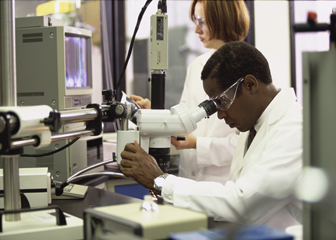Summary
Please enable javascript to play this video.
| Quick Facts: Bioengineers and Biomedical Engineers | |
|---|---|
|
$106,950 per year
$51.42 per hour |
|
| Bachelor's degree | |
| None | |
| None | |
| 22,200 | |
| 5% (Faster than average) | |
| 1,100 | |
What Bioengineers and Biomedical Engineers Do
Bioengineers and biomedical engineers combine engineering principles with sciences to design and create equipment, devices, computer systems, and software.
Work Environment
Bioengineers and biomedical engineers work in manufacturing, in research facilities, and for a variety of other employers. Most work full time, and some work more than 40 hours per week.
How to Become a Bioengineer or Biomedical Engineer
Bioengineers and biomedical engineers typically need a bachelor’s degree in bioengineering or biomedical engineering or in a related engineering field. Some positions require a graduate degree.
Pay
The median annual wage for bioengineers and biomedical engineers was $106,950 in May 2024.
Job Outlook
Employment of bioengineers and biomedical engineers is projected to grow 5 percent from 2024 to 2034, faster than the average for all occupations.
About 1,300 openings for bioengineers and biomedical engineers are projected each year, on average, over the decade. Many of those openings are expected to result from the need to replace workers who transfer to different occupations or exit the labor force, such as to retire.
State & Area Data
Explore resources for employment and wages by state and area for bioengineers and biomedical engineers.
Similar Occupations
Compare the job duties, education, job growth, and pay of bioengineers and biomedical engineers with similar occupations.
More Information, Including Links to O*NET
Learn more about bioengineers and biomedical engineers by visiting additional resources, including O*NET, a source on key characteristics of workers and occupations.
 United States Department of Labor
United States Department of Labor












